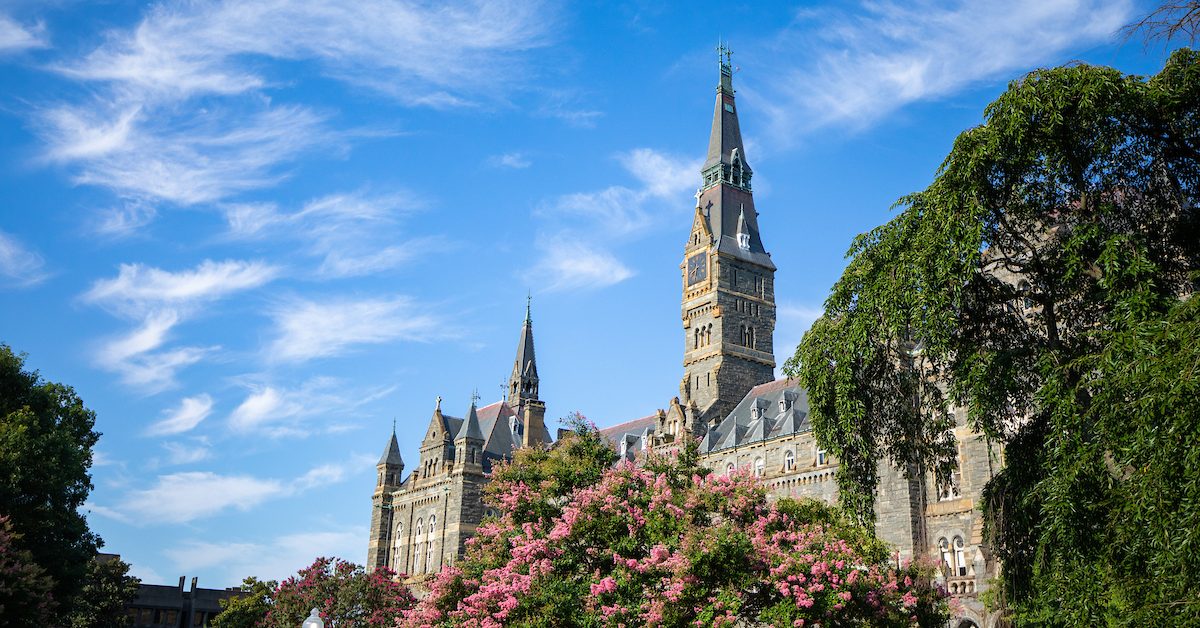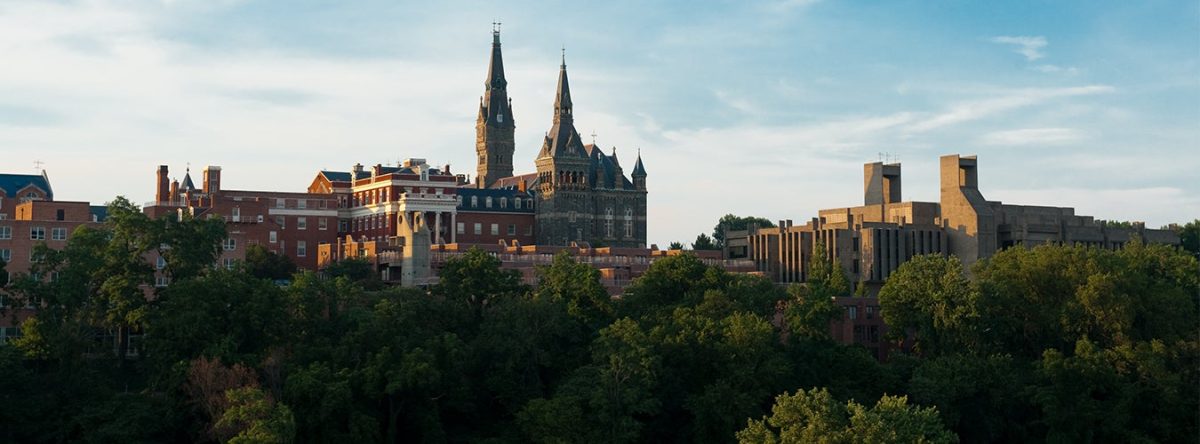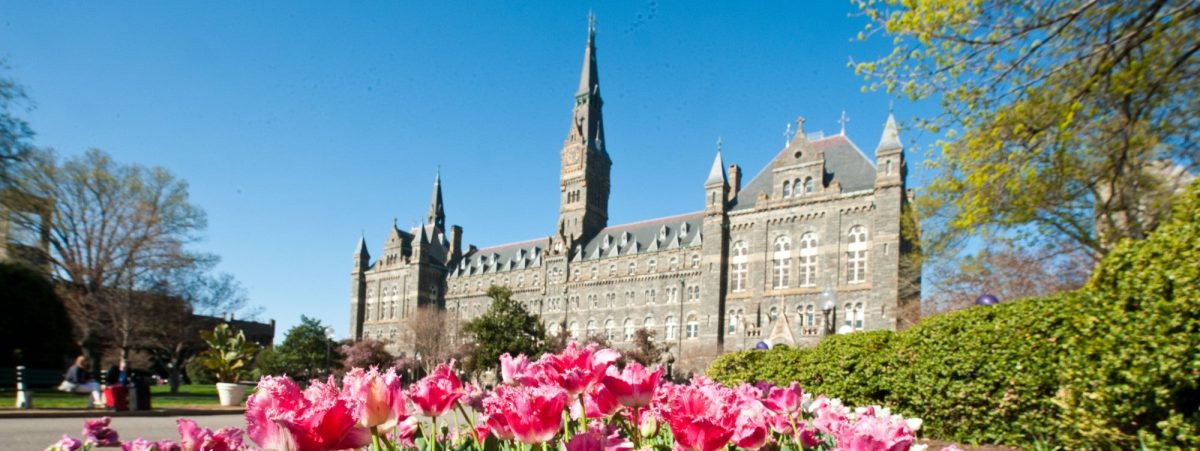Ballet Folklórico Mexicano de Georgetown (BFMG), a student-run Mexican dance group, performed its annual spring showcase in Gaston Hall on April 6.
The performance showcasing regional Mexican dances featured performances from both Georgetown and local Washington, D.C.-Maryland-Virginia groups, including Ritmo y Sabor, Caporales San Simon, GW Folklorico and Hoya Break Squad. Eric Cahue-Gasca (CAS ’25) hosted the evening, and, according to organizers, the event attracted the largest audience and cast in the group’s 28-year history.

Inés Molina (CAS ’25), who co-directed, choreographed and danced in the show, said the performance succeeded and allowed its organizers to build on existing partnerships.
“We had a lot of firsts this year, like being able to hire artisans in Mexico to hand-make our dresses and ship them overseas just for us, build our relationship with the Mexican Embassy and Cultural Institute and rapidly expand the size of our group,” Molina wrote to The Hoya.
Sabrina Gómez (SFS ’27), who choreographed and danced in the show, said the experience illuminated the power of dance and performance.
“It is always so inspiring to see everyone’s nerves of the night transform into confidence the moment the lights on stage turn on,” Gómez wrote to The Hoya. “I couldn’t be more grateful for every single attendee and the help of all of our staff that made the event possible!”
David Patnaude (SON ’28), who attended the show, said he enjoyed the various dances, referencing “Danza de los Panaderos,” a dance that is meant to emulate the movements of bakers, from the Guanajuato region of Mexico.
“I loved it, it was amazing,” Patnaude told The Hoya. “I was literally dancing the entire time. One thing that surprised me was the bread throwing, that was insane.”
Mariela Cruz (SFS ’28), a BFMG performer, said preparing for the show with her co-performers on the day of the performance was one of her favorite moments.
“At 5 p.m., we all arrive at Casa Latina and help each other with makeup, slicking hair into tight buns, securing intricate hairpieces and putting on the elaborate handmade dresses brought from Mexico,” Cruz wrote to The Hoya. “We cheer each other on, take cute pictures and laugh together.”
“When I look around at all of us, mostly girls (and a few boys) the word that comes to mind is girlhood,” Cruz added. “At the end of the show, we all return to Casa, watch the performances on the TV and keep hyping each other up.”
Molina said that as a senior, this last show was special to her.
“It was bittersweet to be dancing for the last time,” Molina wrote. “I’ve been lucky enough to have been involved with the production of BFMG’s shows for more than two years now, and Sunday’s show was something I can finally say was my work.”
BFMG is a Mexican dance troupe that started in 1997 and has hosted a showcase every semester for at least 15 years, performing dances from several different regions in Mexico.
Molina added that teaching BFMG classes was a unique experience.
“There are few things I’ve done in college that have even come close to being as fulfilling as teaching for BFMG,” Molina wrote. “It was an honor to be able to share this art and cultural production with my peers.”
Cruz said performing with BFMG felt like an act of resilience.
“It feels like we’re saying: We face so many systemic barriers in pursuing higher education, but we’re still here, dancing together at Georgetown University, one of the top schools in the country, with orgullo (pride),” Cruz wrote. “We’re here to represent our Mexican roots. We’re here to honor where we come from. We’re here for our families and parents who sacrificed so much to get us here. It’s the most inspiring feeling.”
Molina said she felt pride and gratitude being a member of BFMG.
“I love doing this kind of work: connecting back to my own roots, helping others do the same. And it’s even better because I’m lucky enough to do it with music and art!” Molina wrote. “We have the distinct privilege of being cultural ambassadors to the rest of our campus and community, and I’d like to think we do a damn good job.”
Cruz said dancing at Gaston Hall signified the importance of Mexican culture.
“Dancing on the same stage that presidents, royalty and celebrities have stood on is always surreal. BFMG also does such an important job of showing the richness and depth of Mexican culture. Too often, our culture gets reduced to just food,” Cruz wrote. “And while our food is amazing, our culture is also more than that. The history and complexity of our traditional dances show just how vibrant and layered our heritage truly is.”







